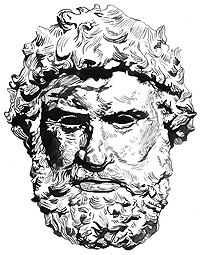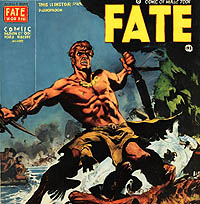In this episode we at least have two types of warriors that were active on Planet Earth at the same time. Again though, we have two different ages, stone versus steel. The Maori are giving away three tech levels.
The Maori were proud and defiant, feared and respected by the Europeans and eventually adapted to firearms warfare, but too little, too late. One of the things that plagued some primitive warrior types when adapting to combat with Europeans was that their audacious rituals did not fit well with firearms warfare. For instance, the powerfully built Maori used cruising and cleaving weapons primarily, so their excitable combat style had purpose in that these types of high energy weapons can be enhanced by berserk energy levels. On the other hand, this is not what you want to see when handling thrusting swords and firearms.
In terms of skill and quality representation of the art under examination, the Chinese weapons experts are of the highest level yet seen on the show. I do not much care for the elaborate circular motion of Wushu. But, these men are world class athletes and their weapon selection is pretty diabolic. Also the fact that three experts are present for each side insures better skill profile across the weapon systems. In terms of psychology, no two opponents in this series have been further apart. However, the weapons are much closer together than the other primitive types. Neither side uses armor or shields and missile weapons are minimal.
Note, that in the first Shaolin battle scene against the bandits, one of the monks has a rattan staff [the beige with burn marks] which would have been of wax wood. I can’t believe the Wushu guys let that slide.
As far as intelligence and adaptability, the Maori eventually learned how to use guns and build modern trench works, where by 1900, Chinese Monks were still charging riflemen in the belief that the bullets could not harm them. So, let’s not beat up on the Maori too much.
Most of the weapon techniques practiced by these monks are easily defeated and are needlessly flowery. If I’m picking an opponent I’d rather fight one of the spinning monks than one of these big Polynesian cannibals. Incidentally, the Maori are descended from Taiwanese tribes man that emigrated from the large island of Formosa off the coast of Southern China, and who actually won a battle against a Japanese garrison armed at WWI tech level.
Note that the twin hooks form places an ankle out there to be hit, as traditional FMA used to. The Shaolin weakness is the switch-step parallel foot placement. These guys know their moves like a WWI drill Sergeant knew the presentation of arms. However, I see the monks as being as unprepared for actual combat as European rifle formations were for the machine gun.
The twin hooks?
No one seemed to notice that they got caught twice. Don’t you think they’d get caught in some big Maori torso? This is a pure dueling weapon, not a battle weapon.
Do note that the twin hooks were designed for defeating a specific weapon, the Tai Chi sword, which was used alone. Now, the linking of the two, and other nasty tricks of this weapon are, serious concerns in a first-time meeting. Although it is an over-rated weapon system it would also be difficult to deal with if the opponent tries to figure it out. But if he goes berserk and charges in, the spinning monk may end up being run over while his ass is facing the enemy.
Basically, what you have in this matchup is modern, practical battlefield attitudes as seen by our current Spec Ops forces paired with really sick Stone Age weapons, against really excellent steel weapons paired with flowery dance moves. Actual tactical studies would give much advantage to the Maori, especially in a squad battle, as the monks have to disperse a great deal to use their best weapon.
As demonstrated by the presence of a modern soldier of Maori descent, there is a lineage that bridged Stone Age and post modern technology with the reverence for war. The thought that technique always wins over strength and vitality comes from a dueling perspective. In actual battle energy does count for something.
One thing that is not mentioned here is that the monk is carrying twice as much stuff, where the Maori, in line with a warrior travelling across country under operational constraints [i.e. what the hell he can carry] uses one weapon at a time, where the monk is addicted to doubling identical weapons. The doubling of identical weapons in the most practical setting—Europe—was only done in very decedent settings. Double rapiers was a weapon that was short-lived and never dominant. Likewise, double pistols gave way to a lever action rifle or double-barrel ten gauge in short order.
It is fascinating that no one questions that we are measuring one Maori weapon to two Shaolin weapons. With all double weapons the fighter—even the best—tend to stand square which plays right into the Maori thrusting weapons. A good rule for training a fighter to insure that he narrows his target area and remains oblique and also uses each weapon in a tactically complimentary manner rather than in a mirror image manner, is to make sure a warrior armed with two weapons has two types of weapons, and, if using a pole arm, that each end of the weapon has a different function. The Maori weapons and usage fit these parameters [also see the trailer below], although the Maori "experts" do not seem to realize this.
With the second double weapon, the piercers, notice that the monk expert begins acting like a big man, standing in front and hammering away. This weapon took like 20 strikes to do the damage of one strike with a sword or other extension weapon.
Again the single green club versus the two spikes demonstrates strategic mobility. The Maori can carry food or water with the other hand while the Shaolin must have a slave—and he probably did—to carry his sustenance as he lugs around his double-set dueling weapons.
Seriously, in an alley, do you want to fight one of the Chinese guys or this big fucking brown person?
In terms of a two handed melee weapon, this is a wash and this is why. That is a big man’s weapon—any weapon that accommodates two hands favors the stringer man. But the monks have a better skills set because two handed staff technique can be practiced non contact to a higher degree of realism than one handed weapons. It is easier to pull strokes with two hands and with weapons held with hands spaced.
The wax wood staff looks slight but wax wood is as hard as white oak and as durable as dense rattan. Early on Chuck Goetz and I used wax wood staffs to make claymore wasters, by using the base of the staff as the blade and the small end of the staff as the hand guard spans. The monk demonstrator really came into his own with the wax wood staff. As George Silver said, the man with a quarterstaff is a match for any swordsman and any pole arm wielder as well. It is the base weapon.
Now, against the wax wood staff you have the strength of the primal man’s desire to maximize his weapon by narrowing the striking surface. As Burton demonstrated in The Book of the Sword, the oar, the paddle and the war club are the ancestors of the sword as they were weapons with an edge that focused striking energy into the target to break bones and kill. So, when working with wood, the Maori weapon is more intrinsically lethal. Intrinsic lethality is important because it does not rely on warrior health. For instance, the drawback of the long bow—a better weapon than the musket—was that if the longbowman was shitting himself he couldn’t draw it as well. But the musketeer is using store chemical energy to inflict damage. Wooden sword versus staff is not as extreme as that, but is conceptually on track. Tactically the monk experts are not conceptualizing their hands as targets. When a staff man grips a stick in the middle the swordsman should take the hands.
I like the case making on the part of the senior Wushu man and the Special Forces man on the age old question of power versus placement. The Monk proponent brings up Foreman versus Ali. Do note, that if Ali had not been tougher than Foreman than he may have fallen rather than the bigger man.
With the whip chain demo the elder Wusho man is absolutely right about the difficulty in defending against flexible weapons. The guy that whirls the chain is a freak, but some of the moves are suicidal—just “kill me know” showmanship. The Special Forces man is also right on his assessment that this is a timing issue facing and using this flexible weapon.
Overall, the use of three man teams with one in a largely advisory position, another a specialist, with a mainstay man, is ideal.
In the end I would favor the Maori, not on size. Not on ferocity and not on skill, but in practicality. His was the only thrusting weapons. The lead Maori guy, said it best when he said, “That’s what the computer says—the computer is probably Chinese!”
The Dead Lands (2014) Official Trailer
I highly recommend this movie.
Twerps, Goons and Meatshields: The Basics of Full Contact Stick-Fighting











James, whats your tanke on those maori weapons that destroy thenselves over time (The Shark Tooth Club) and the Stingray Spear?
Considering the short duration of most encounters at this tech level, I'd compare them to disposable weapons in the modern arsenal like the panzer foust, LAW, claymore, etc.
Really, the best Polynesian weapon is the most durable, the paddle or oar and it is also multiuse. It is said that Musashi killed a swordsman with an oar in one duel.